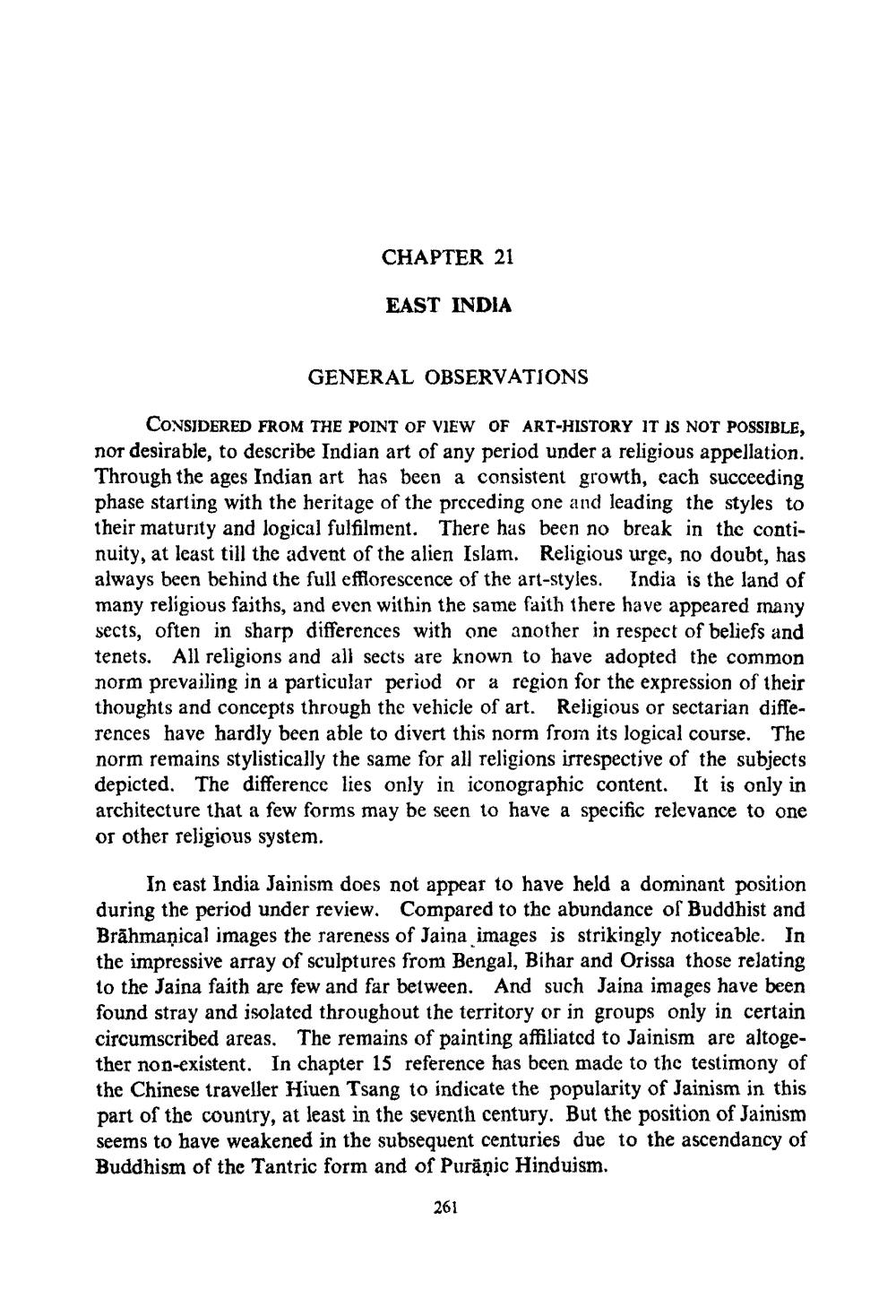________________
CHAPTER 21
EAST INDIA
GENERAL OBSERVATIONS
CONSIDERED FROM THE POINT OF VIEW OF ART-HISTORY IT IS NOT POSSIBLE, nor desirable, to describe Indian art of any period under a religious appellation. Through the ages Indian art has been a consistent growth, cach succeeding phase starting with the heritage of the preceding one and leading the styles to their maturity and logical fulfilment. There has been no break in the continuity, at least till the advent of the alien Islam. Religious urge, no doubt, has always been behind the full efflorescence of the art-styles. India is the land of many religious faiths, and even within the same faith there have appeared many sects, often in sharp differences with one another in respect of beliefs and tenets. All religions and all sects are known to have adopted the common norm prevailing in a particular period or a region for the expression of their thoughts and concepts through the vehicle of art. Religious or sectarian differences have hardly been able to divert this norm from its logical course. The norm remains stylistically the same for all religions irrespective of the subjects depicted. The difference lies only in iconographic content. It is only in architecture that a few forms may be seen to have a specific relevance to one or other religious system.
In cast India Jainism does not appear to have held a dominant position during the period under review. Compared to the abundance of Buddhist and Brāhmaṇical images the rareness of Jaina images is strikingly noticeable. In the impressive array of sculptures from Bengal, Bihar and Orissa those relating to the Jaina faith are few and far between. And such Jaina images have been found stray and isolated throughout the territory or in groups only in certain circumscribed areas. The remains of painting affiliated to Jainism are altogether non-existent. In chapter 15 reference has been made to the testimony of the Chinese traveller Hiuen Tsang to indicate the popularity of Jainism in this part of the country, at least in the seventh century. But the position of Jainism seems to have weakened in the subsequent centuries due to the ascendancy of Buddhism of the Tantric form and of Purăņic Hinduism.
261




